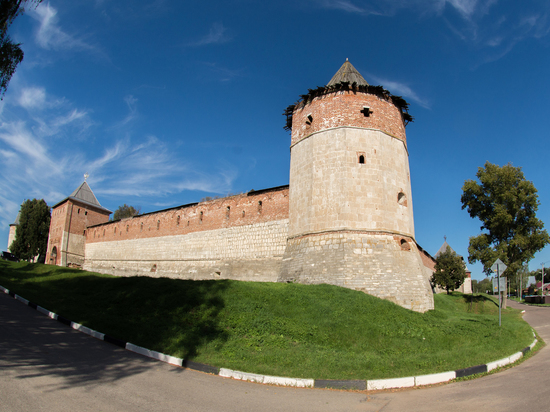Found the Russian city with the largest number of renames
[ad_1]

Tsaritsyn – Stalingrad – Volgograd – ?.. Will there be another change in the name of the famous city on the Volga? There were times when the answer to such a question seemed unambiguously negative. But then again there were ideas to rename and return the name covered with heroic deeds of the Great Patriotic War. Such toponymic changes are a characteristic feature of the Soviet and post-Soviet times. Among Russian cities, there are even record holders for the number of “signage changes”.
The city-“champion” is located in the capital region – a hundred kilometers south of Moscow. This is the current regional center of the Moscow region Zaraysk. One of the most ancient fortified cities of the Moscow region, the same age as the Mother See, for its 876 years of existence was called differently. True, most of these name changes date back to the Middle Ages, when, for obvious reasons, document management was poorly developed.
So, Zaraysk – aka Sturgeon (after the name of the river flowing here), aka Krasny, aka Novgorodok-on-Sturgeon, aka Zarazsk, aka Zaraevsk, aka Nikola Zarazsky-on-Sturgeon … Then – Nikola-on -Sturgeon, Sturgeon again, Nikola-Zarazsky, Zoraysk, Zarask, Zaraysk, Zarazsky. Only in the century before last, this avalanche of toponyms stopped, and the name Zaraysk, which has been preserved to this day, was finally assigned to the city.
The residents of today’s Priozersk had to do a lot of relearning the name of their city. The first settlement on the site of the current regional center in the Leningrad region appeared at the very end of the 13th century. Over the past almost 730 years since then, this settlement has been renamed as many as 7 times. The Swedes, who captured the city, changed the original Russian name Korela to a more digestible for their ears – Kexholm, at the time of joining the Grand Duchy, the Finnish name of the city was changed to the Finnish style: Käkisalmi. And those who returned it following the results of the “winter” war of 1939-40. In Soviet Russia, the Bolsheviks abandoned the not too euphonious Finnish version and returned the Swedish version. But not for long. The Great Patriotic War broke out, the White Finns again captured these territories and again changed the signs with the name of the city everywhere, it again became Käkisalmi. And it remained so until the post-war 1948, when all this foreignness was annulled by the decree of the Presidium of the Supreme Soviet of the RSFSR and the city was given the name Priozersk. The reason for the appearance of such a toponym is clear: the regional center is located near the shore of Lake Onega.
Not far behind Priozersk in terms of renaming the current science city, and in the past – one of the most secret settlements in the USSR – Sarov. The city in which the All-Russian Research Institute of Experimental Physics is located, and where the Soviet atomic bomb was “born” in the middle of the last century, was first called Sarov, then it was slightly changed for ease of use: Sarov. After the creation of the “atomic” institute here, in order to confuse enemy spies, the city was repeatedly renamed – at least in official documents it appeared under different designations. Kremlin, Arzamas-75, Arzamas-16. In the post-perestroika years, the name Kremlev was returned to the city for a short time, but already in 1995 it was officially given a historical name – Sarov.
Here are a few more “polynomial” Russian cities.
Far Eastern Ussuriysk managed to visit Nikolsky-Ussuriysk, Nikolsky, Voroshilov.
The city of Marx in the Saratov region was formerly called Ekaterinenstadt, Baronsk, Ekateriningrad, Marksstadt.
Gatchina near Petersburg, before acquiring this original name in our time, voluntarily replaced the authorities with several names: Trotsk, Lindemanstadt, Krasnogvardeisk.
Ancient Rybinsk on the banks of the Volga briefly had to exist under patriotic names in honor of the deceased leaders of the Communist Party. At first he became Shcherbakov, then he was again renamed Rybinsk, but after the death of the next general secretary, he turned into Andropov. Although “the city with the letter” A “, he also did not remain long and eventually acquired his” natural “name.
The fashion for renaming settlements arose in the first decades after the revolution. According to experts, in total, more than 200 cities have changed their names.
Among them, more than 20 regional centers and large Russian cities changed their names at least once.
Some of these renamings are well known to everyone. But there are also not so replicated stories. For example, Yekaterinburg, one of the largest megacities in Russia, which will soon celebrate its 300th anniversary, initially had a purely utilitarian and by no means euphonious name in the documents – the Newly Begotten Iset Plants. In Soviet times, the city was given the name of one of the leaders of the Bolshevik party and state – Yakov Sverdlov, and after the collapse of the USSR, the capital of the Urals regained its pre-revolutionary name.
Another wave of renaming swept across the country after the debunking of Stalin’s personality cult and the removal of the body of the Generalissimo from the mausoleum.
Finally, wave No. 3 in Russian toponymy was formed after the collapse of the USSR and the rejection of the former dominance of communist ideology. Many towns and villages have been given back their historical names in recent years.
[ad_2]
Source link








